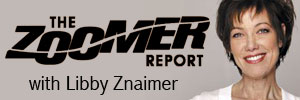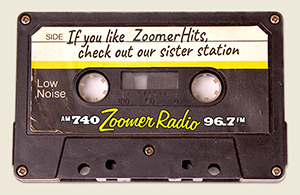Marc Glassman’s Preview of the ReFrame Film Festival

ReFrame lights up January with documentary treats
Peterborough’s film festival available online across Canada
By Marc Glassman
Since 2005, the ReFrame film festival has highlighted social and political concerns through its hard-hitting annual event, which showcases many of the year’s top documentary shorts and features, as well as hosting talks and engaging question and answer sessions with filmmakers and media experts. This year, the festival is available to viewers throughout the country: it’s easy to see important films and watch talks and conversations online at https://watch.eventive.org/reframe2022
Over 70 features, shorts, talks and Q&As can be seen at the ReFrame Film Festival over the next week. It’s a great opportunity to be engaged with the world politically and emotionally without leaving your snow covered home. An almost overwhelming number of docs are on hand to view, many of which are deserving of viewing time and thoughtful consideration.
Here are a couple of features that really struck my eye.
Paper & Glue
(France, 1 hour & 34 min)
Dir: JR
Most people outside of France know the artist JR through his collaboration with Agnes Varda on the inspiring documentary Visages Villages/Faces Places (2017) in which the venerable filmmaker teamed up with the streetwise photographer to travel around France making portraits of the neglected members of society—the working class, poor and homeless—then printing them on a grand scale and presenting them publicly. With Paper & Glue, he seals the deal, showing the best of the work he’s made over his 20-year career while establishing his credentials as a humanist with a hard edge: a self-styled “photograffeur,” a photographer and graffiti artist, whose interventions have a social, if not a political, impact.
JR cleverly introduces us to him and the film through a “getting to know you” talk he has with the inmates of a maximum-security prison in Tehachapi, California, with whom he wants to collaborate on a new project. He tells them about what happened at the Mexican American border, where he shot and installed a photo of an innocent local child, Kikito, after visiting both countries. JR then created an event, where a mariachi band played and tacos were served to an audience on both sides of the border, which is about an hour away from San Diego by car. Even the senior US border guard was charmed by JR’s use of photos, food and fun to emphasize the humanity of people on both sides of a highly politicized barrier.
He then got the thoroughly engaged prisoners—racially divided between Blacks, Hispanics and right-wing Whites—to work together to create a massive photo display of them pasted on the yard, which could be captured by drone for all to see. The photos accompanied video and aural documentation of the prisoners representing themselves for all to hear and see. Both works—the one on the border and the other in prison—emphasize humanity over legalistic and cultural difference.
Most of the rest of Paper & Glue recounts JR’s coming-of-age tale as a cultural provocateur. Starting out as a graffiti artist, he started using a camera after finding one on Paris’s metro. Soon after, he met Ladj Ly, the brilliant, tough Black artist, whose work as the chronicler of France’s worst ghetto in Les Bosquets banlieue, inspired him to show the abysmal conditions which spurred on the infamous 2005 riots in Paris and eventually most of the country.
Ladj and JR became famous in France for provoking those insurrections. The photo JR took of Ladj holding a camera like a gun became iconic as did their fierce extolling of the poor, ill-educated, angry youths of the banlieue, where expectations for any of them to succeed couldn’t have been lower. JR’s photo work took shape during this period, with his “Portraits of a Generation” –huge images of unknown racially demeaned kids—posted onto hoardings over Paris making a truly radical statement. After the riots, JR had to go into exile for a year while Ladj Ly actually went to prison.
But the two persisted and the justness of their cause eventually won over Parisians and many people throughout France. Paper & Glue shows their work as mentors in Kourtrajmé, a collective they formed with other artists, and JR’s brilliant efforts in Rio with another cultural initiative, Casa Amerala, in the city’s first favela. Inspiring and compulsively watchable, Paper & Glue is a documentary well worth viewing and recommending to others.
The Viewing Booth
(Israel/US)
Ra’anan Alexandrowicz, director, script, co-editor, co-producer
One of the smartest documentaries I’ve seen in years, The Viewing Booth is a visual and intellectual experiment that slowly but inevitably asks an important question: do we really see the same thing?
The set-up for the film couldn’t be simpler. A young woman, Maia Levy, enters a room in an American learning institution, where Alexandrowicz, the Israeli director, is sitting next to a massive computer. Ms. Levy is instructed to go to the next room, which turns out to be her viewing booth. Keeping the door ajar, she is given a context for the experiment in which she’s engaging. Alexandrowicz wants her unguarded opinions on short verité footage taken in Hebron, a Palestinian city occupied by the Israelis. Levy is invited to look at various shorts, some of which were shot by Israeli Defense Forces (IDF) while others were made by B’Tselem, a human rights organization in Israel.
Alexandrowicz, who keeps up a line of questioning while each observes these small docs, is clearly intrigued by Levy’s understanding of Israel and Palestine. She has spent time there with relatives and can understand Hebrew. Levy sees footage of rocks being thrown by a young mob and assumes that they are by Palestinians. When told that she is actually seeing angry Israelis, she adjusts her initial evaluation from anger to confusion.
Levy isn’t doctrinaire. One can see that she is quite emotional and caring and not completely political. And, as she interprets short footage of a youngster being picked up and taken somewhat angrily away by a parent who is part of the military, there is deep confusion in Levy’s voice. What is she to make of the film and the questions being asked by Alexandrowicz?
In the second part of the film, Ms. Levy is invited back to revisit the footage she’d looked at earlier. Much of the focus this time is on a short “doc” in which a Palestinian family is awakened in the middle of the night by the IDF. The parents try to maintain their dignity while the military invades their house and looks through their possessions. The children are clearly terrified. Each side, the Israelis and the Palestinians, attempts to be polite while this is all taking place. After the IDF leaves, the children begin to cry. They and their parents have had their lives turned upside down by this raid.
Clearly shaken, Ms. Levy manages her emotions as she tries to interpret what happened. She questions, quite rightly, who has shot and edited the footage. She asks whether the possibility of shooting clandestine footage by a cell phone might have affected how this very loaded incident has played out. Ms. Levy even wonders why the children cried after the IDF left. Was this a phony propagandist piece made by the Palestinians?
Alexandrowicz has created a film with more questions than answers. How is it that we can view actuality footage so differently? Are images, like art, intended for our personal interpretation? In a culture so used to visual representation, can anyone ever be allowed an unguarded moment? How does politics affect how we look at things? Does knowing the backstory of the people being shot play a role when looking at a video or photo? Can we classify anything as the truth?
Here are a couple of more films well worth viewing at ReFrame:
Fanny: the Right to Rock
Canadian Bobbi Jo Hart’s heart-felt tribute to the first all-woman band to really rock out in the late Sixties and early Seventies. Starring two Filipina-American sisters, Fanny was a true breakout band, making tough energetic music for a wide audience when women in rock were expected to be “chicks,” sexy objects of desire who might sing but were never expected to play a musical instrument. Hart’s doc highlights a band who were feminists and desirable but didn’t play up to the boys in other bands or the media.
Firestarter: The Story of Bangarra
Directors Wayne Blair and Neil Minchin have created a sensitive and visually impressive elegy to the Bangarra Dance Theatre, a brilliant Indigenous Australian troupe. Founded by the Page brothers, David, Russell and Stephen, their dance work explored many things but certainly emphasized the heartbreak and sorrow of the Yugambeh Nation from SE Queensland and their reactions to ongoing racism. Creating a beautiful and startling new choreography, Bangarra became a hit internationally but eventually hidden traumas caused tragedies to occur in the group and particularly with the brothers. This film unblinkingly looks at past sorrows but shows a future for Bangarra and Stephen Page.
And here’s a conversation well worth seeing and hearing:
The Cost of Freedom
Sunday, January 30, 2pm
Livestream Q&A
James Cullingham, Abdulrahman Matar, Arzu Yildiz Arzu & Luis Horacio Najera
How do journalists function in a world of such violence that they’re targeted for speaking truth to some of the most dreadful powers in the world? Mata, from Syria, has written as a journalist, poet and novelist, and Is the director of SEEGULL, the Mediterranean Studies Centre and Syrian-Mediterranean Cultural Forum. Arzu has written four books of investigative journalism and is a graduate from the Istanbul Bilgi University. Mexican born Najera has Masters degrees from York and UofT and had co-authored a book “The Wolfpack,” on millennial mobsters. The veteran journalist Cullingham is the perfect moderator for this panel.
May I recommend ReFrame highly? It will make your winter better.











